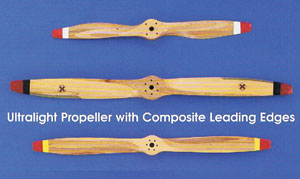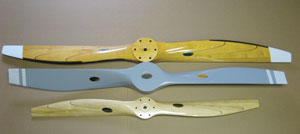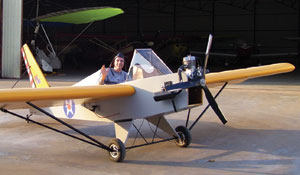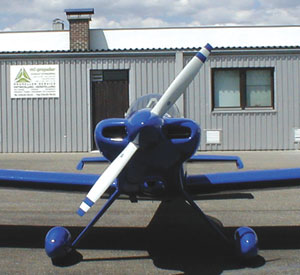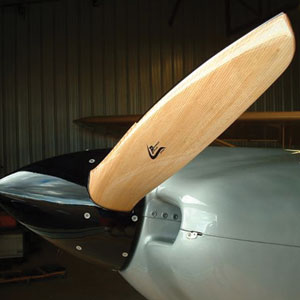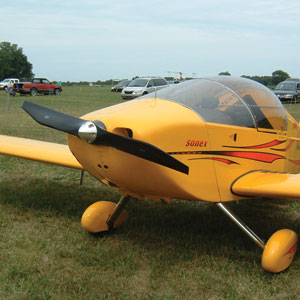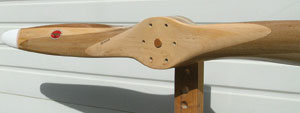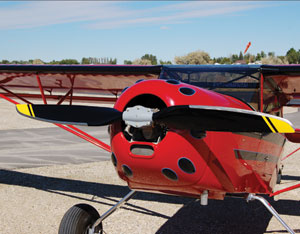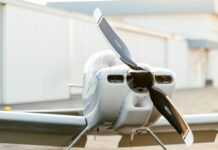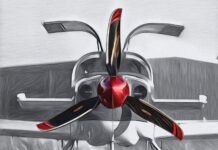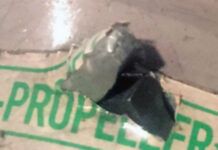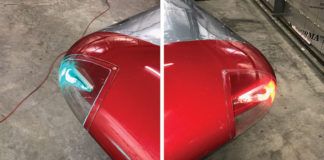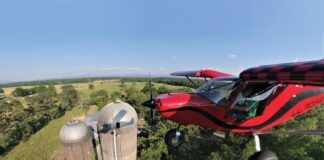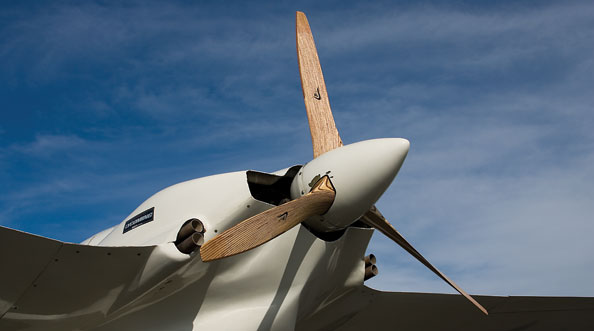
Let’s suppose you are building one of the popular go-fast 160-horsepower two-seat designs powered by a Lycoming engine. The engine choice seems straightforward-go with the one the designer had in mind. But how to choose a propeller? The designer says that two-blade wood fixed-pitch will work, as will a metal fixed-pitch or constant-speed prop. You go on the web sites and find opinions rampant, but actual facts and performance data are harder to come by. Time to shut off the computer and consider the question from first principles.
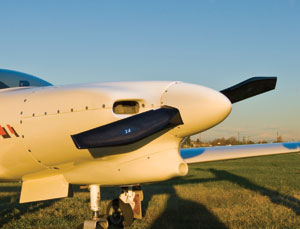
Think of your first bicycle. The one that had just one gear on the rear wheel and one chainwheel on the crank. When you went downhill, you could barely pedal fast enough to keep up with the spinning cranks, and when you pointed it uphill, you had to stand up and shove on the pedals for all you were worth to make it climb. On level ground you could pedal at a steady rhythm and make good speed for a long time. Later you graduated to a multi-speed bike with what seemed like a zillion gears, and no matter whether you were going, uphill or down, you could find a gear that let you pedal in that sweet spot where you could maintain a good pace.
Props, Not Bikes
The concept is roughly similar to flying an airplane with either a fixed-pitch or constant-speed prop. When you got that multi-gear bike, you never wanted to go back to the old one-speed again, so why would you equip your homebuilt with a fixed-pitch prop and effectively put yourself back in the one-speed world?
As usual, the choice isn’t as simple as it first appears. The fixed-pitch prop does have some advantages, and in many cases they more than offset the better performance you can get with a constant-speed prop. Chiefly, the fixed-pitch prop is cheaper, lighter, simpler. In airplanes (and bicycles) anything that costs less, weighs less and causes less trouble is generally considered a good thing. Your airplanes designer (every designer!) repeatedly emphasizes the importance of keeping the airplane light, so you rub your chin and compare propeller weights.
A wood fixed-pitch prop weighs about 12 pounds, but requires a crankshaft extension and a crushplate that brings the installed weight to 20 pounds. The metal fixed-pitch also requires an extension, but no crushplate and ends up with an installed weight of 32 pounds. An aluminum constant-speed prop weighs 50 pounds, but requires a prop governor, governor cable and an oil line, which brings the installed weight to 57 pounds. Forty-five pounds makes a real difference in a 1000-pound airplane. Further research reveals new composite-blade constant-speed propellers that weigh just a little more than the aluminum fixed-pitch. Maybe thats a solution?
Consider the Dough
At the same time the designer is pleading with you to keep the weight down, your spouse is making pointed comments about just how much this beast in the garage is extracting from the family exchequer. You didn’t marry a fool, so you take the advice to heart and investigate the comparative costs. Surveying web sites, it appears that the installed cost of the wood prop averages around $1400, though some props from popular manufacturers are considerably more expensive-up to $2000-while others are slightly less. There aren’t many choices in metal fixed-pitch props, because nothing off a production airplane is suitable for the speed range your baby can achieve. In fact, there is only one metal fixed-pitch prop available, and it was designed specifically for airplanes like yours. The designer is quite adamant that it is the only acceptable one. Bolted up, it costs $2600. You’re a bit shocked to find that an aluminum blade constant-speed retails for more than $8000, and the pain subsides only slightly when you find a deal, available through the designer, that allows you to buy it for a mere $6600. Those promising composite constant-speed units? Twelve to fifteen grand!
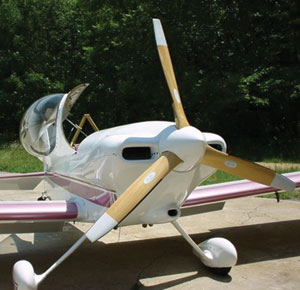
Of course, the prop is just the big chunk. A constant-speed prop requires those extra bits, and its a painful discovery to find that an American-made prop governor will set you back $2000. One imported from Eastern Europe is only $1200. Throw in a $30 cable bracket and a $70 cable, and your least expensive choices for an installed constant-speed prop add up to $7500-or $6100 more than that wood prop.
Then there’s the simplicity thing. A fixed-pitch prop has the technological sophistication of an ax. Other than checking the torque of the bolts attaching it to the crankshaft now and then, there really isn’t anything else to do. The constant-speed, on the other hand, requires more attention. Day-to-day maintenance is not difficult-add a little grease to the hub at annual, check for play in the blades on preflight. But Hartzell, one of the premier manufacturers of constant-speed props, says that propellers manufactured after April 1997 are to be overhauled…at 72 months. In other words, if you live by the company’s recommendations, no matter how much or how little you fly, you’ll be spending hundreds of dollars, probably over a thousand, every five years. And if you are so unfortunate as to damage the prop, you will find that you could replace your fixed-pitch two or three times for the cost of repairing the constant-speed unit.
The Score Thus Far
So the fixed-pitch prop is lighter, its cheaper, and its easier to install and maintain. Those are all reasonable arguments. But you’re not building this airplane to be reasonable. You want excitement, fun, performance, the thrill and satisfaction of breaking the surly bonds. You chose the airplane you’re building to fulfill a dream, and you do not want to hamstring it by putting on a propeller that significantly reduces performance. Just how much would you be giving up to go the reasonable route? For instance, how much slower would the airplane be with a fixed-pitch prop?

Not necessarily slower at all. Let’s go back to the bicycle analogy for a moment. Put yourself back on that one speed. You’re riding on level ground, cruising at a comfortable pace, legs turning the cranks at a steady 80 revolutions per minute. For every revolution of the crank, you make the same amount of forward progress, and the result is 18 mph. If you want to go faster, you could change the gearing to cover more ground for every revolution of the crank. You will certainly be going faster, but it will require more effort to pump the pedals at the same 80 rpm. If you keep increasing the distance traveled per crank revolution, you’ll increase the power required until no more is available and you cant maintain the rpm-whereupon you’ll find yourself going slower than you were with the lesser gear. So it is with propellers: If you optimize the fixed-pitch for maximum speed, about the best the constant-speed prop can do is equal it.
However, if you were to ride that bike-geared for top speed-away from a stop sign, it would take a lot of effort to turn the cranks over and get moving. It will take significant time and distance to achieve a speed at which you can spin the cranks efficiently. In airplane terms, a fixed-pitch prop optimized for high speed will take more distance to leave the ground and more time to climb because the high gear of the prop wont let the engine develop full power until the airplane has gained forward speed. The constant-speed allows the pilot to change gears so the engine, turning against less resistance, can make more power, which in turn means better acceleration and climb.
How much better is the question. It seems that you could expect a climb rate of about 1800 fpm with the constant-speed and about 1400 fpm with the speed-optimized fixed-pitch. Takeoff distance would shrink from 750 feet to less than 500 feet. Top and cruise speeds are much the same, though the constant-speed guys point out they can pull the rpm back while leaving throttle open and operate on 5% to 8% less fuel.
Somehow, for the mission you have in mind, those advantages don’t seem overwhelming. You don’t see yourself flying off strips less than 1300 feet long, and 1400 fpm climb is plenty, even for that short strip with the trees. After all, there are factory airplanes with half that ability operating there. Everyone would like to burn less fuel, but even if the constant-speed prop meant you could burn 10% less, it would take over a thousand hours of flying to save enough money to pay for the prop. For the mission you envision, the fixed-pitch propeller seems to fill the bill.
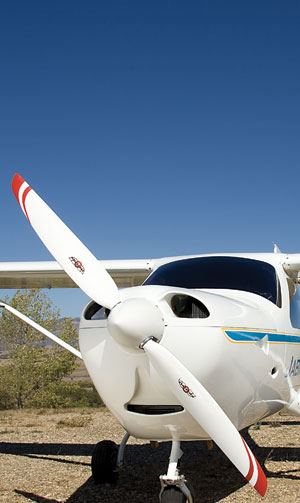
Sensenich
What’s Joe Say?
Just to be sure you have the true picture, you track down a pilot at a nearby airport. He’s been flying the same RV-6 for 15 years, and rumor has it he’s spent several years each with different props. Its flying with a Hartzell constant-speed unit now.
Yeah, he says. I started with a wood prop and flew it for several years. The performance was good and the prop was extremely smooth-very pleasant to fly behind. The prop weighed only about 10 pounds, so changes in rpm were almost instant when you moved the throttle. But wood props wear out. After flying in some rain, and operating off some dusty gravel runways, the wood was noticeably eroded. I also had to pay attention to the torque of the bolts holding the prop to the crank-whenever the weather or humidity changed, the prop would swell or shrink.
I moved on to a metal fixed-pitch prop. The empty weight went up about 15 pounds, all of it right on the nose, which for my CG was good. The flying characteristics didn’t change that much. Flat out the airplane was a couple mph faster, but there was a 2600 rpm restriction you had to mind. Throttle response was acceptable, but the propeller was never as smooth as the wood one was. The takeoff run increased noticeably, and it probably took an extra 150 feet to break ground.
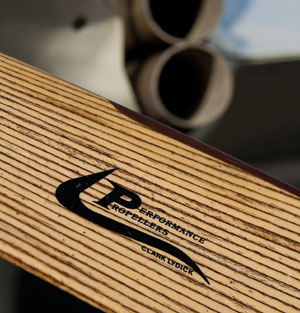
Then I got the constant-speed bug. Because my engine was a solid-crank version that wont run a constant-speed propeller, I had to change the engine as well. Careful shopping and getting a fair price for my old engine meant that the change only cost about $5000-less than if I could have simply bought a new propeller and hung it on the same engine. The first few flights were eye-opening. The airplane jumped off the ground, and the VSI showed about 300 fpm better than it ever had before. But the biggest difference was not acceleration-it was deceleration. The blades go into finer pitch when the power is reduced and cause a lot of drag. The airplane slowed down much faster and sank like a flatiron with power off. And I could tell the difference in handling between the 1000-pound wood prop airplane and the 1045-pound constant-speed version.
Looking back after a couple years with the constant-speed prop, it occurs to me that Im still going the same places with the same loads at the same speeds I did with the fixed-pitch prop. I have better margins, and I enjoy the adrenaline rush of takeoff. I don’t enjoy landings as much-I used to fly the wing all the way to the runway; now I fly power.
So, if you had to do it all over again?
I think Id stay with the fixed-pitch. It was dirt simple, had good all-around performance, and the metal version didn’t mind rain and let me do everything my mission called for. For the difference in money, I could have fueled the airplane for two years.
Well, all of that is good information. After more thought, you may decide that the fixed-pitch will suit your airplane and the way you intend to fly it. The money you save thanks to this decision can be spent on your instrument panel or your paint job or taking that person who’s put up with that…that…obsession in your shop for so long to someplace very, very nice.


